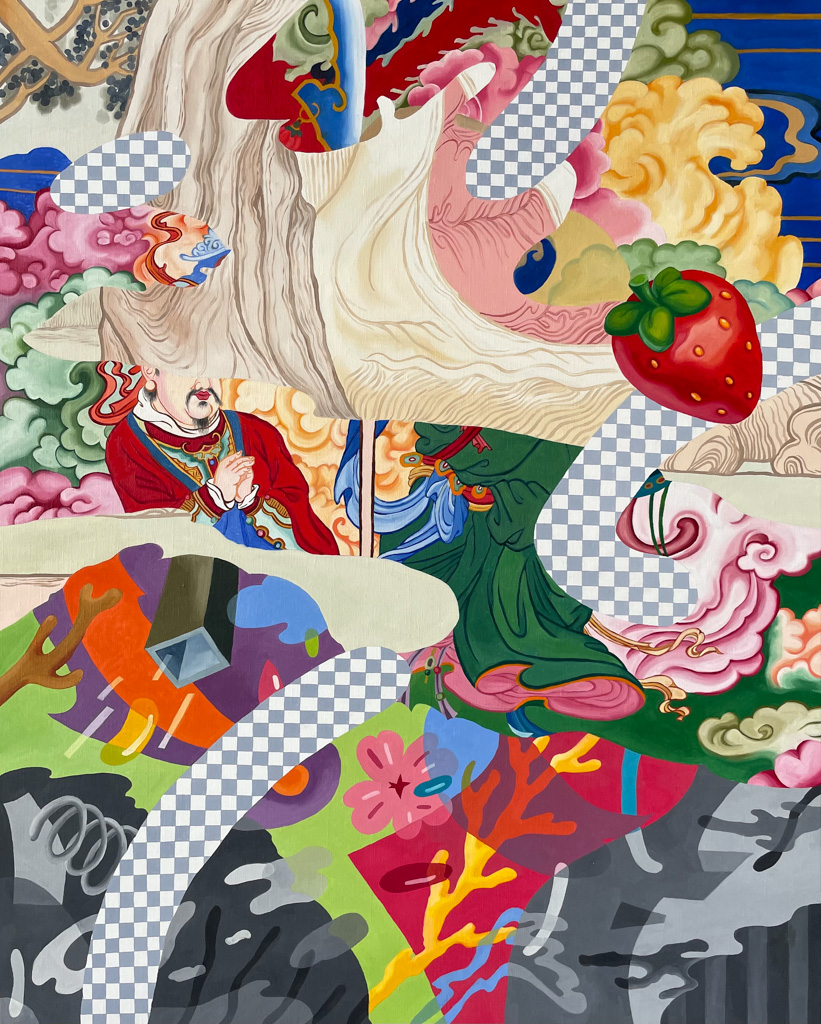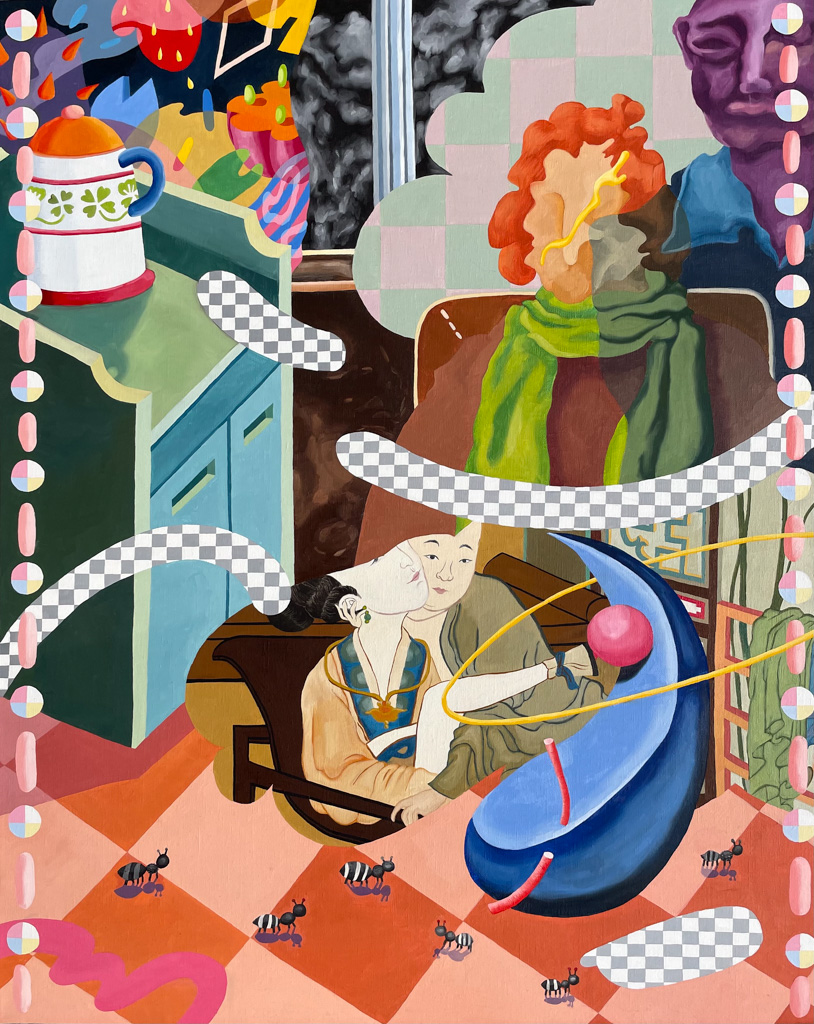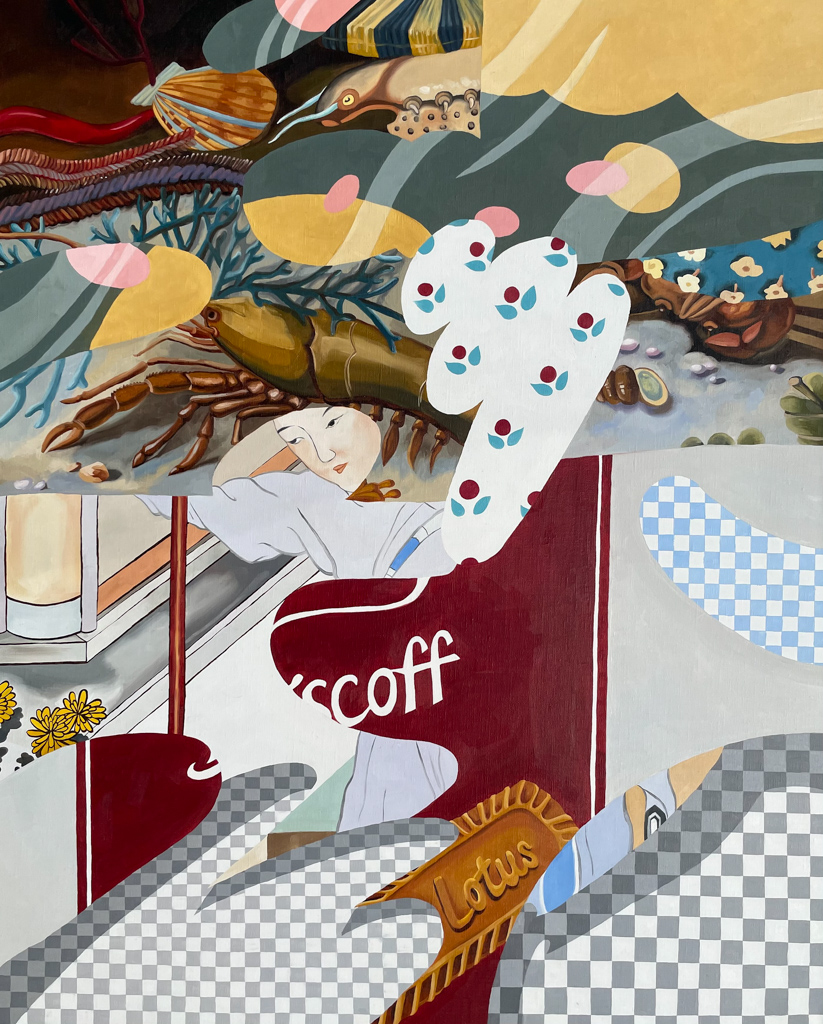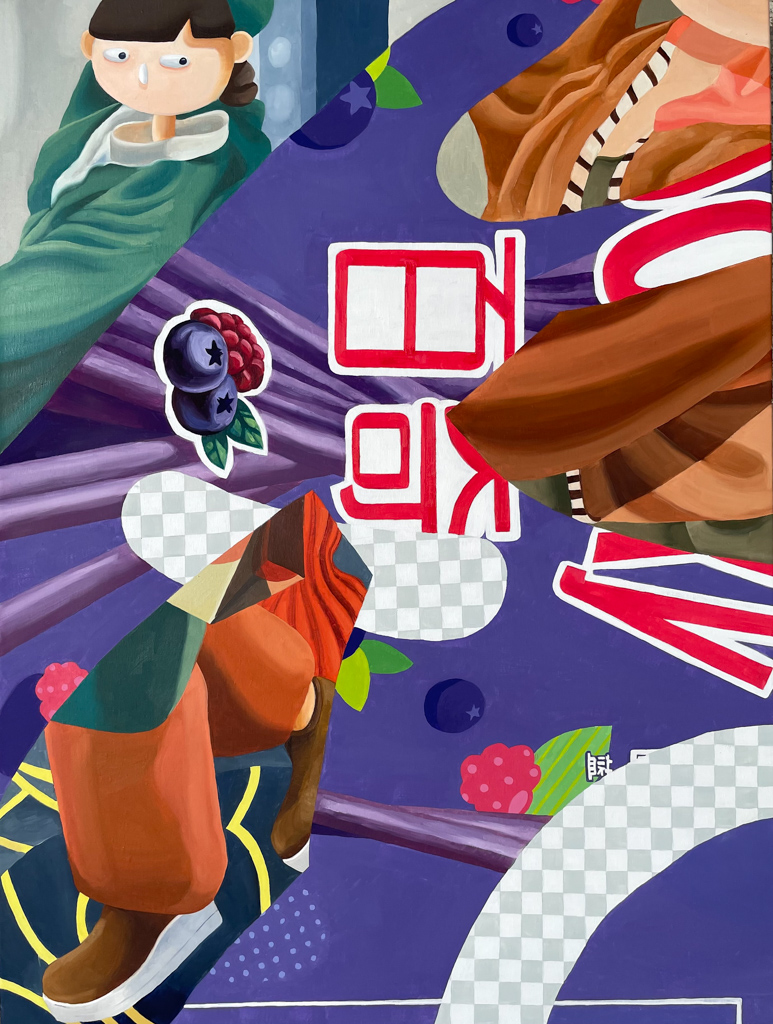Influenced by the abundance of imagery that we get hit with every day, Ziping Wang’s arresting paintings are punchy and overpowering yet subversive. They generate a tension between each element in the artworks while hinting at something deeper than what she presents.
Wang’s paintings involve cutesy depictions of popular food packaging, snippets of gaudy patterns and hints of traditional Asian motifs, which all together convey information overload. They resemble digital collages and contain fragmented subject matter; there is a graphic sensibility to her work, striking saturated colours that create dimension and the illusion of depth.
Some of her paintings include the grey-and-white grid used to delineate the transparent layer of an image in Photoshop, which Wang uses to represent empty digitised space. The surreal, bold iconography occupies space without clearly specifying its relationship with the other elements in the composition. Wang’s use of oil paint adds another dimension to the materiality of the otherwise flat graphic-style design.
The process to create each canvas involves Wang first making some digital sketches as well as physical cutouts and collages as she attempts to get a sense of the whole arrangement. This mirrors the graphic and collage nature of the final paintings. The use of the Photoshop elements in the final painting simultaneously brings the digital and material into the same temporal space.
Wang studied illustration at Rhode Island School of Design before taking her painting MA at Pratt in NYC. Born in 1995 in Shenyang, China, she was named one of the Saatchi Art Rising Stars: 35 Under 35 list in 2020. She has exhibited internationally, with solo exhibitions with both Unit London, and Galerie Marguo, Paris, and also in group exhibitions in New York, Beijing and Shanghai.
Wang’s practice is similar in style to the vivid forms, surrealistic shapes and bright Pop art colours of the American painter and printmaker Elizabeth Murray, whose works are in many major public collections. Wang’s work falls into what we could call pop-expressionism, with the visual sources in her oeuvre ranging from the historical to the contemporary.
The Old Master references suggest Japanese art influences, such as the landscape printmaking quality of Utagawa Hiroshige in The Forgotten Tapestry and the beautiful women portraits of Utamaro Kitagawa in Melting in Your Paperhouse and The Unmade Object.
Many of the motifs reflect avant-garde Chinese art, the use of recognisable modern packaging a nod to the Chinese Political Pop art of Wang Guangyi. This reveals the fact Wang’s spirit is very much a proud Chinese and Asian even though her art education is from America.
Wang’s work sparks indirect conversations about popular culture, advertising and information overload in China, indeed globally, but the issues raised are perhaps more prescient behind the Great Fire Wall of China.
To get around internet censorship, Chinese Netizens often use metaphors or coded slang to hide the true meaning of what they want to say politically. In Wang’s paintings, the audience is given a painting to decipher, but the painting is open to any interpretation.
Reflecting much of Chinese culture, these paintings talk indirectly to the viewer about their true meaning just as Chinese parents will indirectly tell their kids they love them by complimenting their cooking, for example.
The surreal, bold iconography occupies space without clearly specifying its relationship with the other elements in the composition.
There’s a childlike quality to Ziping Wang’s paintings, an innocence that brings joy and happiness yet also a subconscious understanding that below the surface there’s something portentous; perhaps she wants to express this but isn’t able or doesn’t want to fully at this time.
In a way these works are introverted; instead of trying to overthrow the system Wang obediently follows the regulations, yet she deliberately hides her true intentions behind her paintings in the hope that the audience will decipher them someday and unveil the absurdity and frustration behind each one.
This early part of her practice is collectable as we know there is more to come and this work is just the early stage of an artist who has a lot more to say. Let’s hope that in future Wang is prepared to divulge some answers to the myriad questions we have.
All images courtesy Unit London.







